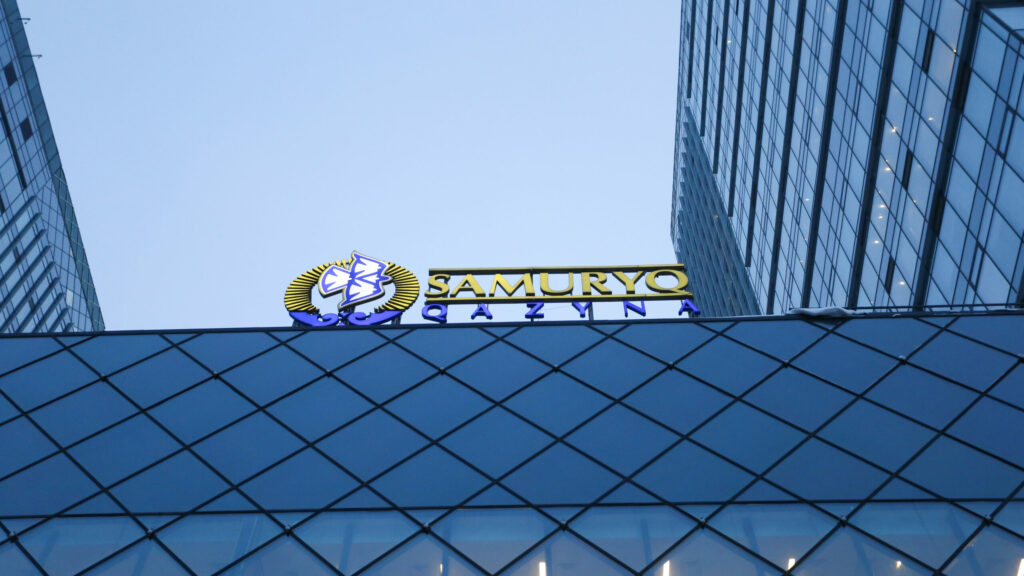A house divided: Kazakhstan’s government at odds with its own wealth fund reform

If one were to wake up a hundred years from now and be asked what Kazakhstani lawmakers and economists are tirelessly arguing about today, a confident answer would be: whether it’s time to dissolve Samruk-Kazyna, the nation’s sovereign wealth fund.
Criticism of Samruk-Kazyna in 2025 and 2022
The fund vs. the cabinet’s objectives
Criticism of Samruk-Kazyna in 2025 and 2022
Since the beginning of the year, barely a month has passed without independent analysts, Kazakhstani media observers or MPs publicly criticizing the activities of Samruk-Kazyna. The depth of frustration is reflected in descriptions of the fund as «a bottomless cauldron of bureaucracy» and «a brake on economic development.»
The fund has faced criticism for its procurement policies, bureaucracy, low operational efficiency, and even for the lack of women in leadership roles at its portfolio companies. Samruk-Kazyna, for its part, hasn’t stayed silent. Recently, Managing Director Saltanat Satzhan addressed financial and economic indicators, correcting what she said were inaccuracies in independent analysts’ assessments of the fund’s impact on the national economy.
It’s no mystery why Samruk-Kazyna appears increasingly sensitive to criticism. A similar wave of scrutiny surfaced in 2022, following the January unrest. At the time, President Kassym-Jomart Tokayev slammed the fund for its bloated structure, opaque procurement system, unfinished major projects and the formalistic role of its boards of directors. He ordered Samruk-Kazyna CEO Almassadam Satkaliyev to reform the fund.
«If it fails to cope with the task of reforming, it will disappear into oblivion,» Tokayev warned at a Jan. 21, 2022, meeting with Kazakhstan’s top business leaders in Almaty.
In response, the fund’s management quickly drafted a 66-point reform plan, with 52 points focused on staffing, procurement and anti-corruption measures. Satkaliyev crowdsourced suggestions on Facebook and even held an online meeting with suppliers to address criticism and explain planned changes to procurement policy.
Despite Tokayev’s stern words, it was already clear in January 2022 that Akorda, the presidential administration, had no intention of dissolving the fund. On the contrary, the government saw it as a vehicle for jump-starting economic growth through new investment projects and job creation. As a major industrial employer, the fund also played a role in implementing government-driven wage increases in the manufacturing sector.
The fact that Satkaliyev left Samruk-Kazyna not for oblivion, but for the Ministry of Energy — and did so more than a year later, in April 2023 — suggests Akorda was satisfied with his handling of the fund’s reform.
The fund’s central problem, acknowledged by both state and independent experts, is the conflict of interest inherent in the government’s dual role. The state acts as both the shareholder of Samruk-Kazyna, seeking higher returns, and the regulator, tasked with promoting competition in key industries for the benefit of consumers.
Furthermore, after 2022, the government assumed another role: driving accelerated economic growth. President Tokayev set a goal of doubling GDP by 2029, assigning the quasi-public sector a central role in reaching that target.
The system meant to resolve these contradictions — the corporate governance model based on international standards that Samruk-Kazyna has tried to implement since its founding nearly 20 years ago — has proved inadequate to the task.
Notably, the problem of a dual mandate — balancing commercial objectives with state policy — has not been solved by any such structure, even those often cited as best practices, such as the Emirati ADNOC and Mubadala or Malaysia’s Khazanah.
Successive teams of Samruk-Kazyna managers have attempted transformations aimed at aligning corporate governance with international best practices. However, they have consistently faced resistance from nearly every influential stakeholder, including counterparties, top managers of portfolio companies and members of the government. Against this backdrop, even modest gains, like introducing uniform procurement rules or key performance indicators (KPIs) for top managers, can be considered significant victories. Still, these efforts have done little to quiet the debate over the fund’s very existence.
There are two general approaches under discussion for potential reform.
The first is dissolving the corporate center, Samruk-Kazyna JSC, and transferring the shares of national companies to the trust management of relevant ministries. Under the current government structure, this would mean the Ministry of Energy taking control of oil, gas and power companies like KazMunayGas (KMG), QazaqGaz, Samruk-Energy and KEGOC. The Ministry of Industry and Construction would oversee nuclear and mining giants Kazatomprom and Tau-Ken Samruk, along with Samruk-Kazyna Construction. The Ministry of Transport would take over Kazakhstan Temir Zholy, the national railway, while the Ministry of Digital Development would manage Kazakhtelecom and Kazpost.
This model would make implementing state policy easier, but operational efficiency would likely suffer. The political priorities of each ministry would outweigh the government’s interest as a shareholder seeking asset growth and dividends. It would also complicate relationships with investors and likely kill prospects for new IPOs. From the perspective of minority investors, the long-term outlook for these assets would worsen.
The second option is privatization. By handing control to strategic investors or groups of private investors, the government could offload the complex and costly web of relationships tied to the quasi-public sector. This approach might follow the model of Air Astana’s IPO — after which Samruk-Kazyna retained a 49% stake and deconsolidated the airline’s assets from its balance sheet in 2024 — or involve scenarios where the government retains a «golden share» allowing it to veto key decisions.
The clear advantage of this option: a large corporate center would no longer be needed. The holding structure itself might even become redundant, replaced by a compact management team modeled on Kazakhstan’s Unified Accumulated Pension Fund (UAPF). This could work if portfolio companies no longer required regular asset acquisitions or sales. The government would collect returns on asset management — as is currently the case with KMG, QazaqGaz and Tau-Ken Samruk — without relying on schemes like the placement of sister company funds in accounts, a practice seen in recent years with Kazpost.
However, this model comes with drawbacks from the government’s perspective. The political leadership would lose its ability to direct the construction of social infrastructure, shift resources between companies or enforce non-market pricing for various goods and services. Large industrial projects, hidden export subsidies and bailouts for banks — politically useful tools — would be off the table.
The obvious downside of both reform paths is the potential loss of control over the fund’s assets by Kazakhstan’s top leadership. For them, the quasi-public sector serves as both an off-budget resource and an informal lever for addressing political and economic priorities.
This risk of losing control was highlighted by National Bank Chairman Timur Suleimenov when asked for his view on Samruk-Kazyna’s future:
«The prime minister chairs the fund’s board of directors. This arrangement allows direct transmission of directives from the president and government to the subsidiaries. If management gets fragmented among 10 to 15 large companies and hundreds of subsidiary and ‘grandchild’ structures, it could create confusion.»
The fund vs. the cabinet’s objectives
Here we come to a defining question: Who is the key stakeholder of Samruk-Kazyna, and why does this stakeholder need the fund?
In 2006, when the Samruk Kazakhstan Holding Company for Management of State Assets and the Kazyna Sustainable Development Fund were created, Kazakhstan was entering the second stage of state asset consolidation. The first stage, in the early 2000s, saw the government gather scattered assets into national companies and establish development institutions. The second stage raised questions about how to manage these structures effectively, and how to sustain economic growth and social stability in the regions where they operated.
Starting in 2003, President Nursultan Nazarbayev centered his economic agenda on industrialization and rising prosperity. Formally, the state aimed to concentrate its assets and capabilities to implement industrial policy. Politically, Astana needed resources to achieve goals that were more about maintaining employment and advancing social policy in the regions than about pure economic development.
The tools for this policy weren’t crafted by political strategists in the capital — they often emerged within individual structures (such as Kazatomprom-Demeu initiative) and were later scaled up.
By the 2010s, the anti-crisis role of the newly merged National Welfare Fund Samruk-Kazyna took center stage. The fund took on bad assets from crisis-hit banks, launched major construction projects and became a key player in the State Program of Accelerated Industrial and Innovative Development. In effect, it became an anti-crisis tool for the head of state, a role it continued to play during the crises of 2015 and 2020.
The fund’s chronic issues — lack of transparency, bureaucracy, bloated staffing and political appointments — were in many ways byproducts of its mixed role, operating at the intersection of state and business, politics and economics.
Criticism of the fund’s procurement practices has historically stemmed from competing business groups vying for access to lucrative state contracts. Securing a spot among Samruk-Kazyna’s suppliers has long been viewed as a rent-seeking opportunity. It’s worth noting that many critics aren’t calling for more open competition or equal access to procurement but are instead lobbying for preferential treatment for their own companies or products.
That said, there are also voices — from popular commentators to independent analysts — who raise legitimate concerns about the fund’s operations and governance.
Still, this criticism is secondary to the fundamental question of whether the president and government see value in the fund as a holding company. Samruk-Kazyna’s existence has always been tied to the interests of Kazakhstan’s top leadership. If the fund ever «passes into oblivion,» it will happen only when the country’s leadership no longer needs it.
Currently, the government’s priority is to double GDP, and the fund is a key player in this effort. Over the past three years alone, Samruk-Kazyna’s capital investments have totaled more than 6 trillion tenge (about $11.3 billion). In 2023, its capital expenditures reached 17% of revenue, slightly decreasing to 14% the following year.
The fund employs around 270,000 people nationwide, with its impact on employment and social stability most critical in regions like Mangystau and Atyrau. Tens, if not hundreds, of thousands more work for its contractors, though exact figures aren’t disclosed in official reports.
For Akorda, losing the fund now would mean losing one of its key levers of control over the country’s economic and social landscape, something Astana cannot afford.
As for the debate over whether the fund should exist, that will no doubt continue. At the very least, it serves to keep the fund’s leadership on their toes.

